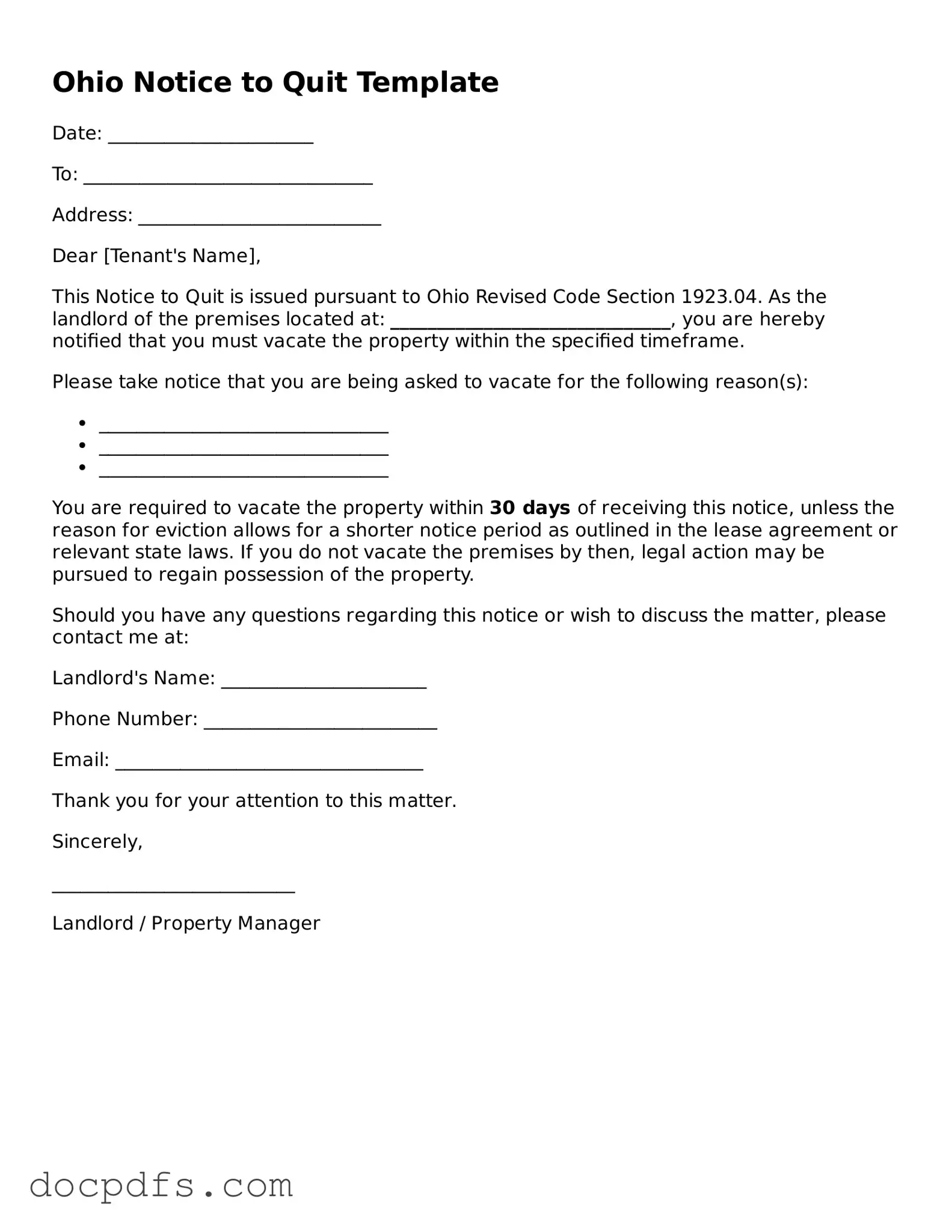Free Ohio Notice to Quit Form
The Ohio Notice to Quit form is a legal document used by landlords to notify tenants of their intent to terminate a lease agreement. This form serves as an official request for tenants to vacate the rental property, typically due to lease violations or non-payment of rent. Understanding this form is essential for both landlords and tenants to navigate the eviction process effectively.
Open Notice to Quit Editor Now
